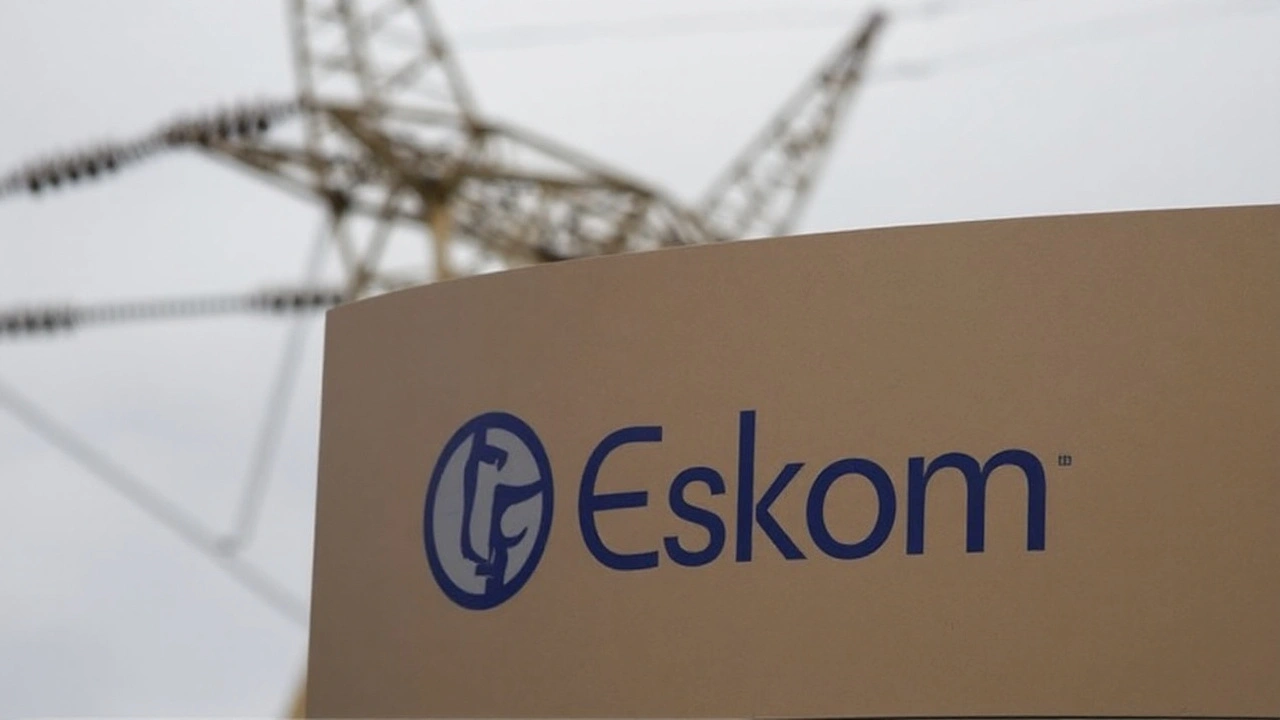
South Africa’s grid operator is stepping into the fast lane. On 9 September 2025, Eskom put 20 battery-powered bakkies and light trucks into service and installed 10 chargers for its own operations. A week later, on 16 September, it signed a Memorandum of Cooperation with BYD Auto South Africa, aligning the state utility with one of the world’s biggest EV makers to push national charging infrastructure and make the BYD Dolphin Surf the country’s most affordable all-electric option.
For a utility better known for keeping the lights on, the move is a signal: Eskom doesn’t just plan to supply electrons—it wants to shape how mobility uses them. Acting Distribution head Agnes Mlambo said Eskom is ready to take what it learned from its own fleet and help the public plug in with practical, accessible charging.
From internal pilot to public infrastructure
The initial 20 vehicles will run on Eskom duty cycles—inspections, site visits, and logistics—where predictable routes and depot charging make the switch straightforward. That’s the quiet advantage: predictable charging windows, centralised maintenance, and lower fuel costs turn fleets into fast adopters. Electricity typically costs less per kilometre than petrol or diesel, and EVs have fewer moving parts, which cuts routine maintenance.
BYD’s role adds scale and a consumer hook. The Dolphin Surf, positioned as South Africa’s most affordable EV, opens the door for first-time buyers who have been priced out of the segment. If Eskom boosts charging availability while BYD brings a lower-cost model, the country gets both sides of the adoption puzzle—supply and demand—moving at once.
The cooperation deal targets several areas that matter on the ground: expanding public charging at key sites nationwide, developing local skills, and creating room for SMMEs—installers, technicians, site operators, and software providers—to participate. That’s not just about plugging in cars; it’s about building an ecosystem with real jobs in installation, maintenance, grid integration, and data services.
Policy winds are favorable. Government has set out an EV policy framework and early incentives to draw investment into local manufacturing and supply chains. South Africa already has hundreds of public chargers clustered along major routes and in big metros, but access is uneven. Eskom and BYD want to push new sites where demand is rising—shopping centres, office parks, logistics depots, and highway stops—so drivers don’t have to plan around a sparse map.
Under the MoC, the parties plan to explore:
- Renewable-powered ultra-fast charging hubs that combine grid supply with on-site solar and battery storage
- Second-life battery reuse for stationary energy storage and commercial backup systems
- Smart charging and demand-side management, including managed overnight charging to ease peak load
- Standards, training, and data-sharing to keep chargers reliable and interoperable across brands
Can the grid handle it?
That’s the question many South Africans ask first. The answer depends on when and how cars charge. Managed charging makes a big difference. Most EVs plug in overnight or during the workday, which can line up with off-peak hours or midday solar. If Eskom uses price signals and software to shift charging away from the evening peak, the grid impact stays manageable while the utility gains flexible demand it can shape.
This is where fleet electrification helps. Eskom can test time-of-use tariffs, smart chargers, and depot scheduling in its own backyard before scaling to the public. Add storage at busy sites and you blunt short-term spikes. Add solar and you shave daytime grid demand even more. Over time, vehicle-to-grid (V2G) could provide backup and balancing services, but that needs standards, warranties, and clear rules so car batteries aren’t overworked.
Reliability matters as much as speed. Well-placed 60–150 kW chargers can transform city and corridor travel without waiting for ultra-rapid hubs at every stop. The plan is to seed a reliable backbone first, then fill gaps as adoption grows. Think: dependable chargers on key corridors and in dense urban nodes, with clear pricing, 24/7 support, and easy payment.
For households and small businesses, the economics are already compelling. Fuel savings stack up quickly for high-mileage drivers. Fewer oil changes and brake replacements trim maintenance costs. And if Eskom keeps tariffs predictable, lifetime ownership costs should undercut comparable combustion models—exactly the argument the utility is making as it pitches EVs as clean and cost-effective.
The jobs angle is just as important. Training technicians to install and service chargers, certifying electricians for high-voltage work, and building local assembly for components like mounting hardware and switchgear can feed SMME growth. Every new charging site needs groundwork: municipal permits, grid assessments, trenching, civil works, and software integration. That’s local work by default.
Battery recycling and reuse are the long game. When EV packs lose range for driving, they’re still valuable for stationary storage. Repurposed packs can back up clinics, schools, and small businesses, especially in towns that need resilience. It also keeps valuable materials in circulation and reduces waste.
What happens next? Eskom and BYD are expected to map priority sites with municipalities and property owners, align grid connections, and stage deployments so chargers come online in clusters rather than one-off points. Expect a mix of highway sites for long-distance travel and urban hubs where dwell time is natural—shopping, dining, and work.
Consumers will watch three things: charger uptime, price transparency, and interoperability. A driver should be able to tap a card or use a simple app at any public charger and get a clear price per kWh. If Eskom’s network connects smoothly with existing operators, route planning gets easier and anxiety fades.
This initiative doesn’t replace the private players already building the market—it adds public heft where scale and grid know-how matter. Companies have been installing chargers along the N1/N3 corridors and in major cities, some with solar-and-storage sites to reduce strain on the grid. With Eskom coordinating grid access and standards, rollout can speed up without tripping over bottlenecks.
South Africa’s EV story won’t be written in a single year. But a state utility adopting EVs for its own fleet and teaming up with BYD is a practical start. Put affordable models on the road, back them with reliable chargers, train the people who keep the system running, and the rest follows. That’s the bet Eskom is making as it moves from pilot to public deployment of electric vehicles—and it’s one the market has been waiting for.
18 Comments
Write a comment
More Articles

Croatia vs Albania: Live Euro 2024 Updates, Scores, and Full Match Analysis
Get live updates and comprehensive analysis of the crucial European Championship match between Croatia and Albania. After tough opening losses, both teams are eager to secure a win. Follow along for minute-by-minute coverage, key player highlights, and detailed match breakdowns.

MrBeast Hires Investigators Amidst Controversy Surrounding Ava Kris Tyson Grooming Allegations
Popular YouTuber MrBeast has enlisted investigators to scrutinize claims involving his former collaborator Ava Kris Tyson. The allegations assert that Tyson sent inappropriate messages to a teenager during her early twenties. MrBeast, disgusted by the charges, severed professional ties while awaiting investigation results. Tyson has apologized, and the alleged victim contests the narrative.

Lionel Messi Sidelined With Ankle Injury: Impact on Inter Miami's Upcoming Matches
Lionel Messi has sustained an injury to his right ankle ligament during the Copa America 2024, leading to his absence in at least two games for Inter Miami. The injury was confirmed by the club’s communications department, and his availability will depend on recovery assessments. Head coach Gerardo 'Tata' Martino is hopeful for a quick recovery, but Messi's presence will be missed in the Leagues Cup group stage.
Aditya Kulshrestha
September 19, 2025 AT 19:06The Eskom‑BYD tie‑up isn’t just a PR stunt; it introduces a measurable increase in charging points, which, according to the latest load forecasts, will require an additional 150 MW of capacity by 2027 😊. By deploying fleet chargers first, Eskom can collect granular usage data, calibrate time‑of‑use tariffs, and fine‑tune demand response algorithms before scaling to the public network. Moreover, integrating on‑site solar and battery storage at depots will alleviate peak‑hour stress, preserving grid stability while showcasing renewable‑backed fast charging. In short, the partnership must align technical standards, data protocols, and tariff structures to avoid the typical “plug‑and‑play” pitfalls that have hampered earlier projects.